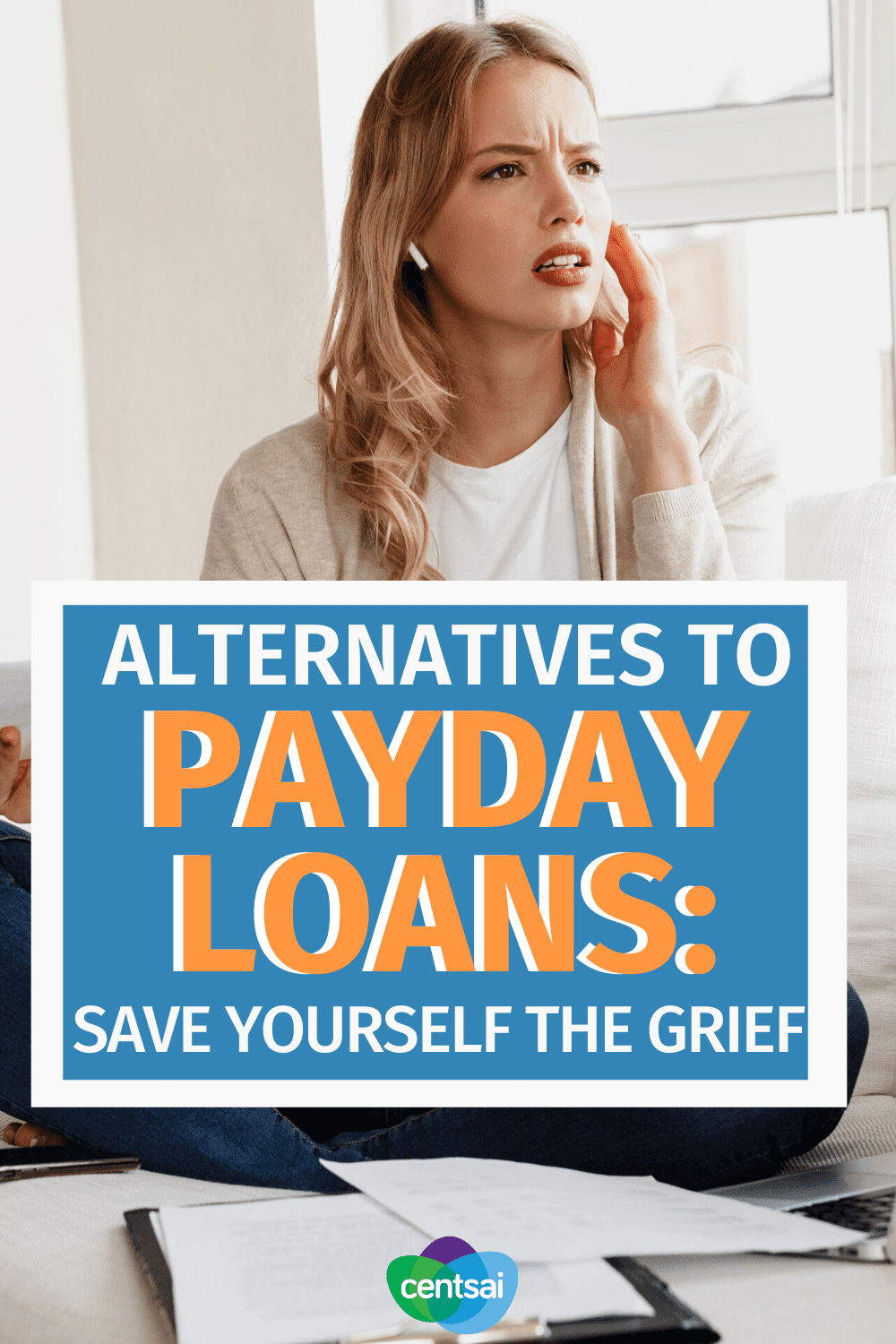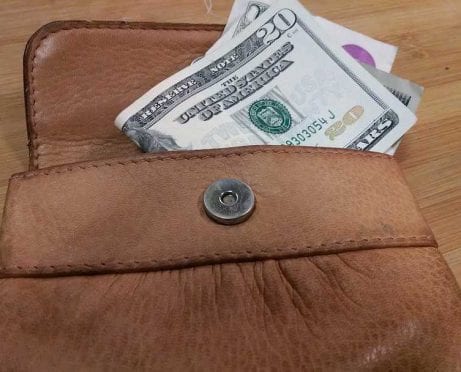
 Erin (who prefers not to use her real name) admits that she has made some major money mistakes as a young adult.
Erin (who prefers not to use her real name) admits that she has made some major money mistakes as a young adult.
Without family members to cosign on a student loan for her, and with only a paycheck from her retail job to help her with bare-bones expenses, Erin felt the financial weight of her decisions much more than some of her peers did.
Turning to Payday Loans: A Cautionary Tale
“I thought that I had to go to college and live near campus,” Erin remarks. “Honestly, I thought I had to do a lot of things a certain way, and that I would be in trouble if I didn’t. And that’s why I turned to them — payday loan banks.”
Erin first heard of payday loan businesses when she applied to work as a teller at one such outfit.
“At my interview, they made it sound like they were helping people. It was a nice place with comfy couches for clients, and the tellers were in these black suits.”
She didn’t get the job, but instead became a customer herself. Then Erin’s impression changed dramatically.
Despite walking out with a payday loan of $590 deposited in her bank account — enough to pay a portion of her fall tuition bill — she was shocked when she did the math.
The flat interest fee that her payday lender charged was $18 per $100, meaning that in two weeks, she would owe the payday lender the $590, plus $105 in interest.
“I didn’t have that. I was working as a fitting room attendant and going to school full-time. Honestly, I had no idea how I was going to pay off that huge amount.”
Erin’s story isn’t unique. In fact, Pew Charitable Trust reports that 12 million people use payday loans for small amounts, which are capped by most state laws at $300 to $1,000 (though some states do not have maximum amounts) with a 200 to 400 percent interest rate.
Build an Emergency Savings Fund With a Money Market Account — Get Started >>
What Happens When You Can’t Pay Back the Loan in Full?
When it becomes impossible to pay back the loan in full, many lenders also offer the option of renewing the loan for the same amount and continuing to make payments. But that comes with a fee.
In Erin’s case, this cost her an additional $50 per paycheck for each renewal. She renewed her original loan for over three months. In doing that, she racked up roughly $300 in fees. This brought her total cost of her loan to $405 over the original $590 loan — only slightly higher than the $520 an average American payday loan recipient pays on a principal amount of $375.
“Each month I felt like I was drowning,” Erin says.
“I dropped out of college and took on a second job. I started waitressing under the table so I could keep all my tips and use it to pay down the loan. It took me about four months to pay off everything.”
Payday lenders have come under much scrutiny lately as state and national lawmakers work to regulate the industry. But the regulations proposed and passed do not address the issue that people like Erin face – where to turn when money is needed, and needed now.
These borrowers often have credit scores that are too low for credit cards. When expenses such as medical bills or car repairs come up, they are unable to pay and will often turn to payday loans for help.
Erin wants those considering a visit to a payday lender to know that there are alternatives.
Get a Small Personal Loan for Your Emergency Expenses Today — All Credit Types Welcome >>
Alternatives to Payday Loans: Programs for Rental Assistance
“When I couldn’t pay my lease, a friend told me about a church charity program in my community that assists with rent. I worked on weekends doing lawn work. In return, they paid my lease and utilities for two months.”
Many communities and national programs, such as the Salvation Army, can step in when money is tight.
Before offering her rental assistance, the church charity required that Erin take financial literacy classes. Erin learned about building credit and took out a credit card designed for new borrowers. Every month, she put her regular cell phone bill on the card and scheduled payments to pay it in full.
Her credit went from 590 to over 680 in just five months.
This opened up the potential to apply for lower-interest credit cards or small personal loans from banks and credit unions.
Build Better Credit Today With a Secured Credit Card — Apply Here >>
Getting Back on Track
Erin eventually turned to a professor at the college she had attended and managed to get a side job, cleaning up a laboratory after classes. While it was only $50 per week for about six hours of work, she was able to save up an emergency fund of $1,500 in eight months. This gave her the confidence to go back to school the right way.
Today, Erin is one year away from completing her bachelor’s degree in chemical engineering. Unlike before, she isn’t going in blind. She also isn’t relying on student loans. The laboratory hired her on as a full-time assistant, allowing her to apply for and receive tuition assistance through her new employer’s program.
Check Your Rates for Refinancing Your Student Loans — Save Money Today >>
But aside from her degree, she thinks she is coming out with an even more important life skill:
“I’m now much stronger than I was when I started college and dropped out,” she says.
“I don’t want to give up as easily, and I am more cautious with my money. While I hate to admit it, using a payday lender and losing almost everything was one of the best things that ever happened to me.”
Other Alternatives to Payday Loans
Many borrowers are caught with high monthly payments. Aside from the Salvation Army, local churches, and community groups, here are a few other alternatives to payday loans when you’re in need of some fast cash.
1. Dip Into Your Retirement Fund
“If a person has a 401(k), borrow against that instead of a payday loan,” says senior mortgage loan originator Mike Scott of Independent Bank. “These loans are typically given a relatively low APR, and it is easier to budget in the $20 to 30 you would pay back each pay period as opposed to paying the principal plus high interest on payday loans every week.”
Manage Your 401(k) Today — Start by Getting Your Free Analysis >>
2. Talk to Your Employer
“Without a 401(k), ask for an advance from your employer,” Scott adds. “Set up payment arrangements so that you would be paying the advance back gradually, say over a six-month period.”
3. Consider Crowdfunding
Mike Scott also recommends that you “launch a GoFundMe or similar service, and share it with your Facebook friends.”
He says that while most people may not have $500 lying around, “your friends may be willing to part with $5, which, with 100 friends, would get you the money you need — minus any fees.”
Promote Your Crowdfunding Campaign — Create a Free Account >>
4. Turn to Your Local Resources
“Check with a local credit union — or a family member — to see if you can get a loan from them,” Scott adds. Depending on your credit score, you may qualify for a loan backed by a community financial institution. Keep in mind that if you borrow from a relative, you should make it a priority to pay them back as soon as possible to avoid something missing here? Damaging the relationship? Causing family stress?
Relying on your community, taking advantage of your local network, and entertaining alternatives to payday loans can ensure that you get the money you need in a way that doesn’t jeopardize your financial future.
Additional reporting by Connor Beckett McInerney.









